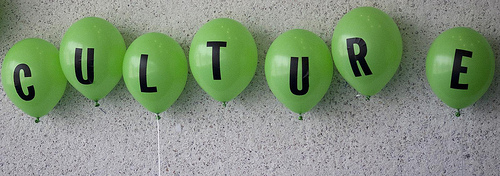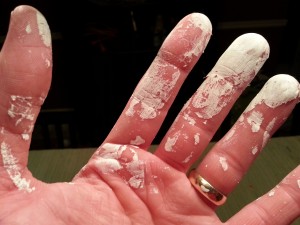This is the next in a series of posts by recipients of the Career Services Summer Funding grant. We’ve asked funding recipients to reflect on their summer experiences and talk about the industries in which they’ve been spending the summer. You can read the entire series here.
This blog is by Pele Colins, SEAS’ 17 and Steve Rybicki, SEAS ’16.
The company with whom we were offered summer work is called Robohand, which is located in Pretoria, South Africa – not far from Johannesburg. Robohand works out of a large house, as opposed to an office building, called House 4 Hack, an incredible technological innovation center. Doctors (PhDs) and countless intellectuals come to the house every day and work on a number of different projects. Aside from Robohand, these projects include 3D printer development, development of quadcoptors and drones, advanced computer science and software development, etc…
 Robohand was created back in 2012 by a South African carpenter and innovator named Richard Van As, who created the idea for the hand after losing a few of his fingers in an accident. What originally began as on opportunity to rebuild his own fingers expanded into a company helping individuals all over the world. In fact, a Robohand product exists in every country around the world, except three!
Robohand was created back in 2012 by a South African carpenter and innovator named Richard Van As, who created the idea for the hand after losing a few of his fingers in an accident. What originally began as on opportunity to rebuild his own fingers expanded into a company helping individuals all over the world. In fact, a Robohand product exists in every country around the world, except three!
According to the website’s press page, “Robohand creates 3D printed and aluminum CNC machined, anatomically driven, custom fitted, mechanical devices to help limb different individuals as an alternative to standard prosthetics.” The company’s technology has been able to help finger, hand, and arm amputees as well as individuals born with Amniotic Band Syndrome (ABS), a congenital disorder which inhibits the development of the hand and/or fingers. 3D printing technology allows for the prosthetic’s parts to be manufactured incredibly quickly and cheaply; thus, an entire, partially-functional hand can be manufactured in only a few hours and at a fraction of a cost of traditional prosthetics. The functional Robohand prosthesis, when coordinated with the movement of the wrist, allows the individual to grasp and release items such as a ball, cup, pencil, etc. Adults have been able to regain partial use of their lost extremities and limbs; children born with defects have been able to perform actions and pursue goals they otherwise would have found impossible. Robohand is rewriting the futures for children and adults around the world.
In March, we Skype-interviewed with Leonard Nel, the Director of Communications for Robohand. Through our conversation, it was apparent that the Robohand organization would benefit from additional support. Demand for the product is currently exceeding its supply, both in material and manpower to produce the devices. Leonard also indicated that, in addition to printing and fitting Robo-fingers, hands, and arms, we would also be involved in the development of new Robohand technology. The company is in the process of creating a new line of 3D printers, called the RoboBeast. The RoboBeast’s larger, more rugged design allows the technology to be more easily transported to areas of the world where people most need the devices printed. Additionally, in our role with the company, we would be involved in the design and creation of Robohand’s most recently conceptualized products – Robo-feet and legs.
What’s also incredible about Robohand is that their prosthetic designs and computer files are all open-sourced and available for free online. Anyone with the correct software and access to a 3D printer – anywhere in the world – can print and assemble one of these hands. Continue reading “Designing for a Better Future”


 Recently I was reading a career book when one sentence jumped out at me. “In many ways, conducting a job search is like adapting to a foreign culture.” Aha! I thought. This is exactly what career exploration and job searches are like for a number of the international students I advise (actually, for almost all students to some extent, since most students have not yet had full-time professional jobs, so it can be a “foreign culture” to them too).
Recently I was reading a career book when one sentence jumped out at me. “In many ways, conducting a job search is like adapting to a foreign culture.” Aha! I thought. This is exactly what career exploration and job searches are like for a number of the international students I advise (actually, for almost all students to some extent, since most students have not yet had full-time professional jobs, so it can be a “foreign culture” to them too). u would actually do that?” Often, it seems easier just to ask your friends after the session. The problem is that, depending on the topic (careers in this case), your friends may not know much more than you do. (Or what they know may be very specific to their individual experiences.)
u would actually do that?” Often, it seems easier just to ask your friends after the session. The problem is that, depending on the topic (careers in this case), your friends may not know much more than you do. (Or what they know may be very specific to their individual experiences.) that employer. It helps the employer determine if you fit their company culture. Yes, you need to have the skills necessary for the work, but once an employer has determined that you have the skills they need, they want to understand why you want to work there. Responses such as, “Because you’re a famous company” or “I’ve always wanted to work for a company like yours” are not sufficient. Your response needs to indicate both what you know about the company and that you’re enthusiastic about working for them. Adam could have said something like, “For one of my class projects we tested a programming language you use, so I was interested in reading more about your company when I saw this job posting. When I read about your projects, the languages you use, and how you invest in new employees, I knew this would be a good fit.”
that employer. It helps the employer determine if you fit their company culture. Yes, you need to have the skills necessary for the work, but once an employer has determined that you have the skills they need, they want to understand why you want to work there. Responses such as, “Because you’re a famous company” or “I’ve always wanted to work for a company like yours” are not sufficient. Your response needs to indicate both what you know about the company and that you’re enthusiastic about working for them. Adam could have said something like, “For one of my class projects we tested a programming language you use, so I was interested in reading more about your company when I saw this job posting. When I read about your projects, the languages you use, and how you invest in new employees, I knew this would be a good fit.”
 Surely, the top coat of paint could or should do whatever magical thing the coat of primer does. As far as I can tell, primer helps the final coat of paint stick to the wall more effectively. It gives the shiny, colourful paint something to hold onto. As I was awkwardly perched upon a ladder over the weekend, precariously applying my primer on the ceiling, I wondered if this might be a good analogy for the process of networking.
Surely, the top coat of paint could or should do whatever magical thing the coat of primer does. As far as I can tell, primer helps the final coat of paint stick to the wall more effectively. It gives the shiny, colourful paint something to hold onto. As I was awkwardly perched upon a ladder over the weekend, precariously applying my primer on the ceiling, I wondered if this might be a good analogy for the process of networking.